81% of B2B industrial sector buyers research online before making a purchasing decision.
–2012 GlobalSpec study
Before you read on, let that marinate for a second. 81%. That’s a pretty powerful statistic. If the industrial sector includes you, this means that while your team is working the phones, shaking hands at trade shows and playing golf with prospects, 4 out of 5 of your potential customers are busy doing their homework on you and each of your top competitors online. That is of course, if you’re visible enough online to be found in the first place.
It’s your choice whether you ignore those 4 out of 5 or embrace what online marketing can offer you. Should you choose the latter, the rewards are plenty.
What follows is a visual representation of a prospect’s online journey from unaware to lead to customer. We’ve illustrated this idea with examples from one of our clients (TruQC). TruQC is a software company that has developed a quality control iPad application for use on job-sites. The app allows users to document required quality control data digitally, as oppose to the long-standing (and very much outdated) paper methods.
Step 1: Make yourself visible to that 81%
Before a lead can become a lead they need to know you exist, and it’s likely that a good chunk of those 81% researching online don’t know who you are yet. You need to be discoverable, and the first question you need to ask yourself is this: If you were in your customer’s shoes, what words would you put into a Google search to find the services you offer? For TruQC, those key terms include things like “job-site documentation” and “quality control app”, so we work with TruQC to load the website with content about those topics, and as you see below, their service pages, blog posts and videos are among the top ranking pages in Google searches for those keywords.
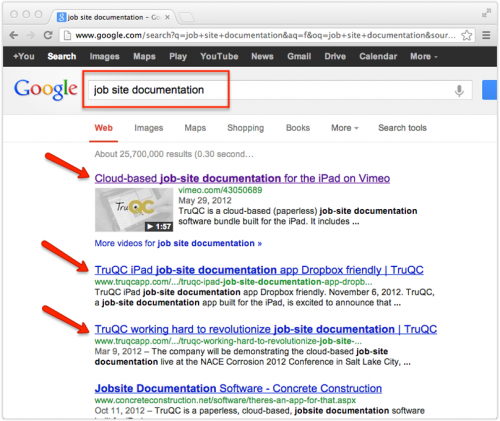
Step 2: Collect their email address before they leave your site
Google searchers like in the above example will find their way to your website. The next step in their journey to becoming a customer is assuring they stay engaged with your business. Asking for them to subscribe to a monthly newsletter is an appropriate move at this stage.
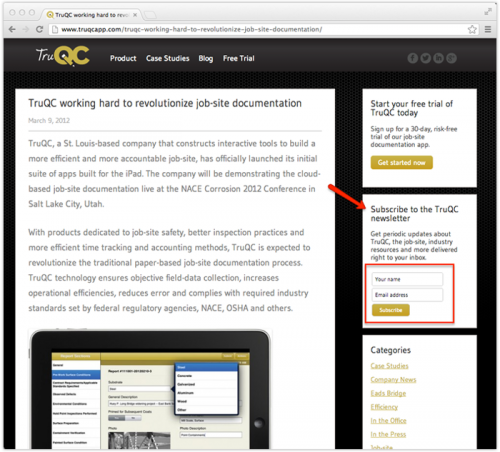
Step 3: Keep them engaged through email marketing
As your email database grows through tactics like the above, your focus among those leads will shift from building awareness to building trust and qualifying your business as the right solution to their problem. Email marketing is the right vehicle for this task. The frequency of email blasts may vary from weekly to monthly or even quarterly depending on your industry and target market. The opportunity, regardless of frequency, is to create consistent touch points with your leads and become a valuable source of information to them. Focus less on the hard sell and more on bringing them back to your website to consume new blog posts and higher level content pieces (like downloadable white papers and guides) that offer significant value to them.
In the below example, TruQC promoted a case study for one of their clients. Their email blast provided a short teaser about the case study and encouraged visitors to come back to their site to download it as a PDF.

Step 4: Create opportunity to score your leads
Back in step 2, we talked about collecting email addresses to create new leads, but we haven’t known up to this point which of those leads are more likely to develop into a customer. Here in step 4, we’re creating opportunity for the more engaged leads to come forward. After driving visitors from their eblast to the case study on their website, TruQC asks the visitor to provide a little bit more information in order to view a higher level piece of content (in this instance an 8-page case study).
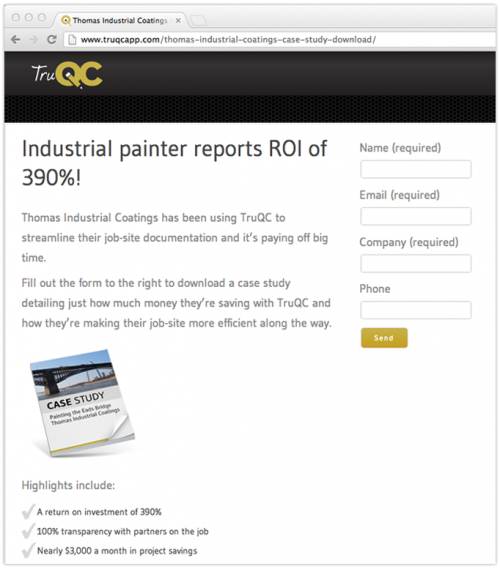

Step 5: Keep your leads organized
Whether you have a sales team or do the selling yourself, it’s important that the contact information collected from these more qualified leads finds its way into the right hands. We set up email alerts for our customers, like the below, so they know when someone has taken an action like downloading a case study.
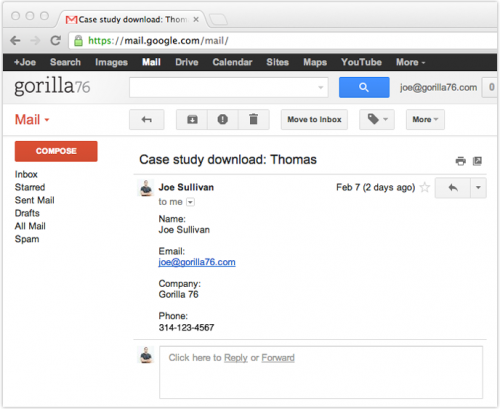
We strongly encourage the use of a CRM (customer relationship management) system such as Salesforce to keep your leads organized and track your engagement with them over time.
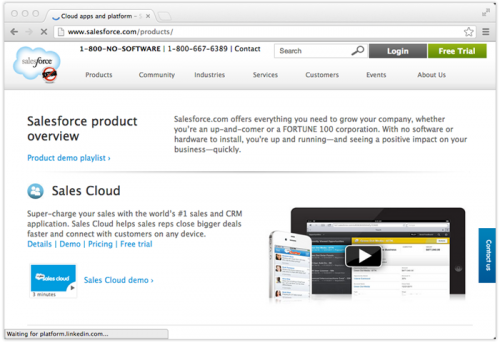
Step 6: Time to sell
We of course recognize that downloading a case study doesn’t mean a lead is ready to become a customer. But they’re one step closer than they were last week, and therefore a more qualified prospect. If things go as planned, members of this more engaged crowd will inquire for services when they’re ready to talk. But in the meantime you’ve created opportunity to start dialogue with them as well. You’ve given them resources and useful content that’s qualified your business in their eyes and begun to establish trust. They in turn have identified themselves as an interested prospect and willingly handed you a free pass to get in touch with them.
In conclusion
Even if you don’t physically sell a product or service online, remember that your prospects are still doing their research there to inform their buying decision. In the business to business world, including industries like construction and manufacturing, online lead generation is an powerful tool and the return on your investment can be incredibly rewarding.
